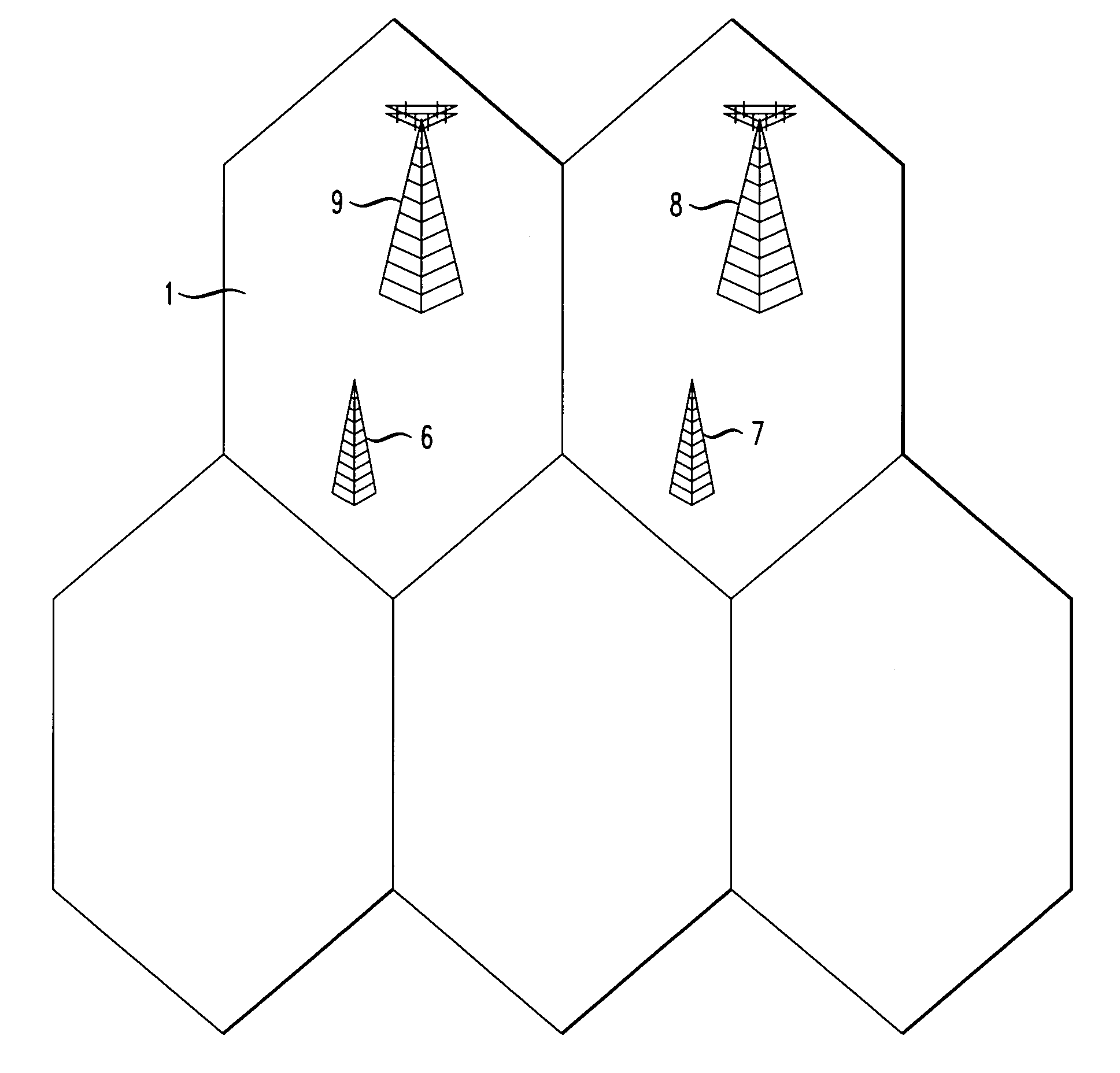Reverse loop protocol
a reverse loop and protocol technology, applied in the field of wireless communication, can solve the problems of data transmissions at such significant error rates that are unacceptable, the battery of the transceiver losing charge, and the interference effect of such high-power transmissions on other reverse loop transmissions, so as to improve network efficiency, broad application, and reduce the effect of average power
- Summary
- Abstract
- Description
- Claims
- Application Information
AI Technical Summary
Benefits of technology
Problems solved by technology
Method used
Image
Examples
Embodiment Construction
[0013]Surprisingly it has been found that determinations of the probability of specific circumstances existing in a communication network lead to the efficient allocation of suitable reverse loop power targets for a plurality of transceivers operating in a cell such as the cell, 1, with base station 9 in the FIGURE. Since the power targets are based not on measured error rates but on statistical considerations, the method is most reliable when the average number of transceivers, 6, in a cell over an operating period is at least 5 preferably 10. Although operation is acceptable for fewer transceivers, the operation of such a cell is not as efficient because the power targets are chosen based on statistical determinations that rely on a sufficiently large sampling to produce probability estimates. Nevertheless, surprisingly a relatively small number of users provide adequate statistics for reliable results.
[0014]The interference with each reverse loop communication emanates from other...
PUM
 Login to View More
Login to View More Abstract
Description
Claims
Application Information
 Login to View More
Login to View More - R&D
- Intellectual Property
- Life Sciences
- Materials
- Tech Scout
- Unparalleled Data Quality
- Higher Quality Content
- 60% Fewer Hallucinations
Browse by: Latest US Patents, China's latest patents, Technical Efficacy Thesaurus, Application Domain, Technology Topic, Popular Technical Reports.
© 2025 PatSnap. All rights reserved.Legal|Privacy policy|Modern Slavery Act Transparency Statement|Sitemap|About US| Contact US: help@patsnap.com


